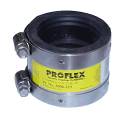lottia
DIY Member
The stub
is 2" galvanized. The outside diameter of the CI hub is about 4". I can't see much of the CI pipe itself but it looks like about 2.5" OD. It has also become apparent that this connection has a very slow leak, so I should replace it. So...
I'd appreciate more advice on
Thanks.
l
is 2" galvanized. The outside diameter of the CI hub is about 4". I can't see much of the CI pipe itself but it looks like about 2.5" OD. It has also become apparent that this connection has a very slow leak, so I should replace it. So...
I'd appreciate more advice on
- removing the lead and oakum
- the correct Fernco donut
Thanks.
l


